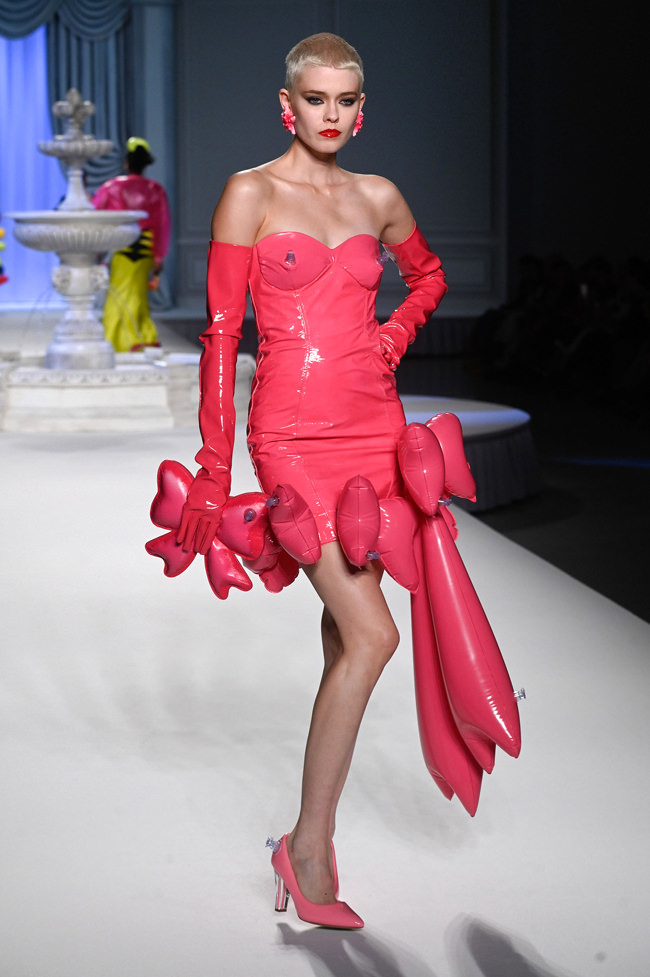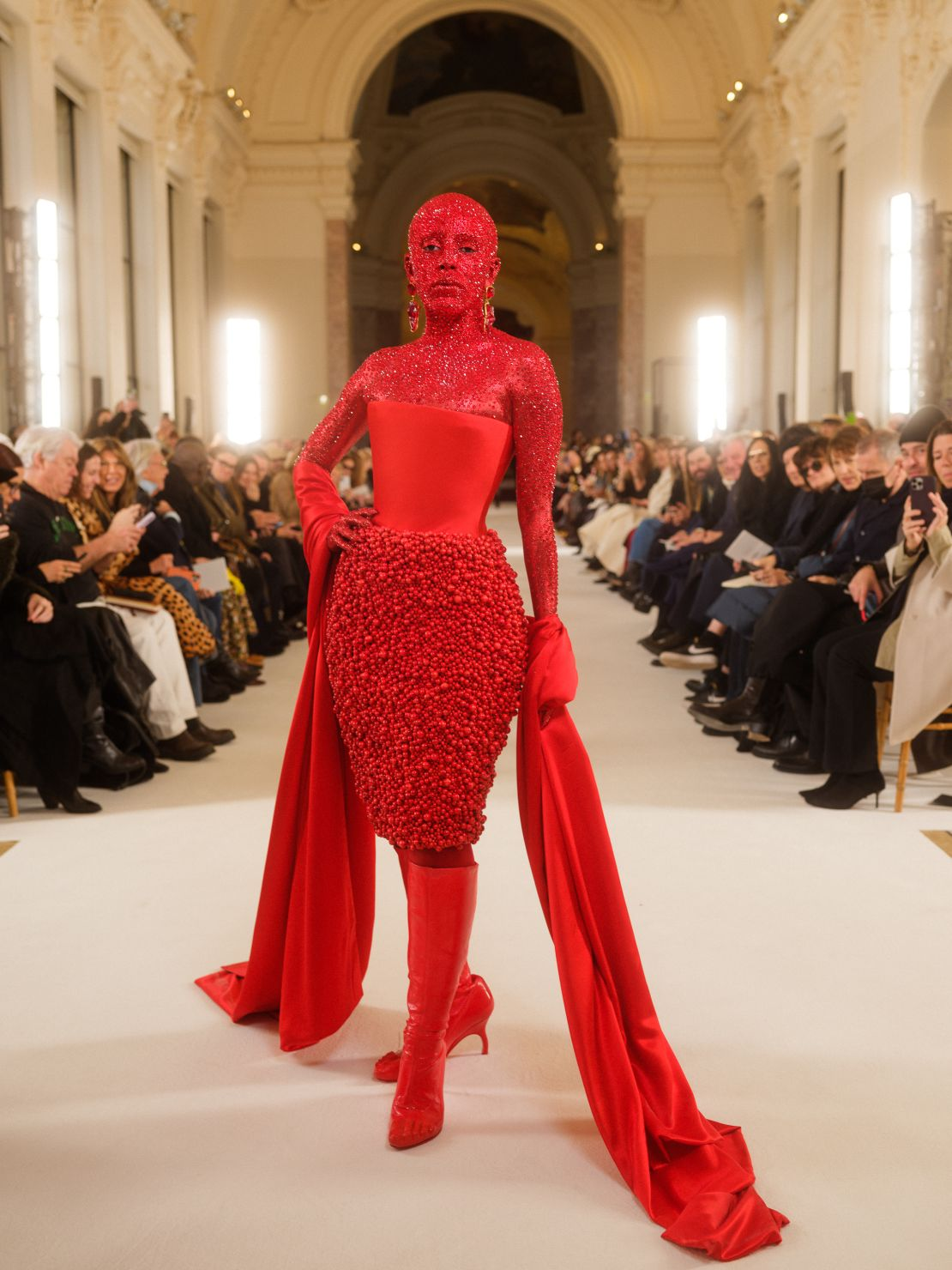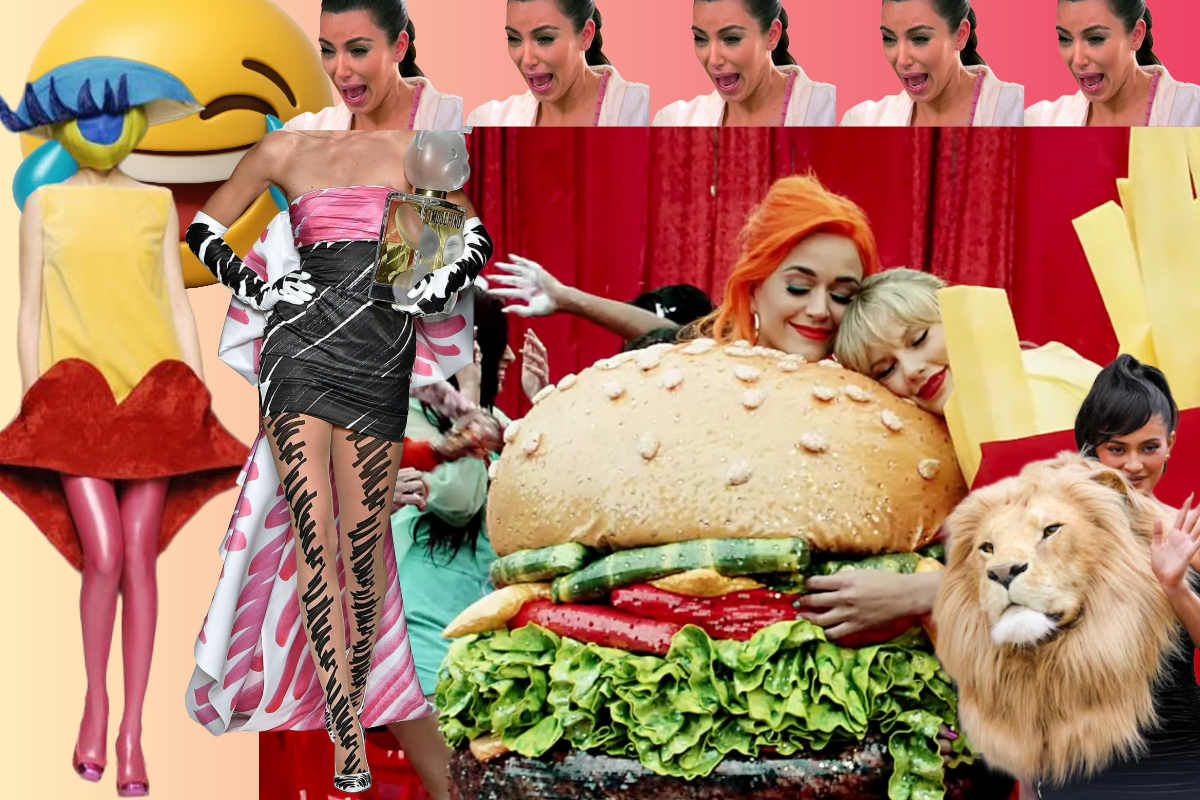
Merriam-Webster defines humor as an amusing or funny quality. Throughout history, humor has been a medium to make meaningful connections with people. Ancient Greek comedy was a very influential and powerful form of theatre, with the work of Aristophanes and Menander standing out significantly through the nick of time.
Fashion has consistently been a part of these chapters in history, not just to strengthen the messages of comedians, but for people of all walks of life to have fun with their clothes and have some sense of humor about themselves or the world around them. Let’s take a closer look at how fashion can be humorous and bring people joy.
Fashion can be a serious matter —and it should be taken seriously, when we talk about dress codes, or professional clothes for formal events. But there are moments where we can have humor with it. Humor is subjective, as many factors like our culture, our background, our story, and our exposure to pop culture influence what we find funny and what we don’t find funny. Still, there are consistent factors that designers consider when they are making fashion with humor in mind.
For instance, there is something quite unexpected about being inspired by elements that are completely unrelated to fashion with clever twists. Irony and fashion can work as a successful couple when executed correctly. This is something that Katy Perry and her team did very well during her Teenage Dream and even her Prism tours, where she often referenced food as part of her clothes in a way that was playful, silly but still clever with the way the shapes of the food worked around her body. Katy Perry played a persona of a sweet girl with dresses shaped like pastries, candies, and ice cream. Still an element of sexiness and seduction that made the entire show entertaining for kids and adults alike.
Jeremy Scott is one of the most successful designers when it comes to blending fashion and humor. During his tenure working at Moschino, he and his team did thorough research on what was relevant in pop culture and blended it with unexpected twists that often questioned what tasteful clothing entails. As it quite often happens with humor, he often received pushback and criticism from fashion critics. Some collections were objectively more successful and created more positive reactions than others.


Another great form of blending fashion and humor successfully is to challenge the fashion expectations of having flattering clothes in exaggerated and silly ways. Many times, this kind of humor is used to make a statement about how fashion doesn’t have to be taken seriously all the time and how one can have fun when it is taken out of proportion in clever and authentic ways.
Funny Fashion and Surrealism
Surrealism explores the subconscious mind, dreams, and the irrational to create images that are illogical. Surrealism is an artistic and literary movement that is no stranger to the fashion world. In fact, Salvador Dali —the Spanish painter widely known for his surrealist paintings, was a very close friend of Elsa Schiaparelli, the Italian eccentric fashion designer who was heavily influenced by surrealism and collaborated several times with the Spanish painter.
In the 2020s, the house of Schiaparelli continues to follow the founder’s influence in surrealism, but acknowledging the technological, digital and cultural changes that this new century has brought. This blend of surrealism with fashion has given Schiaparelli the opportunity to play with humor and create not just stunningly crafted pieces but also viral looks that have kept the fashion house relevant in today’s fashion market. It wasn’t just the fashion press that covered the iconic dress Kylie Jenner wore with a lion head that was made of foam, resin, and faux fur. (Yes, it looked stunningly real, but no animals were used for any of the pieces in the collection). Schiaparelli is also responsible for the literal head-to-toe red look that Doja Cat pulled off. In another show, Cardi B arrived with an exaggerated scoop-neck column dress transformed into a head-to-shoulder dress. As the singer was already creating expectations for her upcoming album Am I the Drama? She brought an actual raven for a very dramatic entrance to the couture show that was surreal. At a time when it seemed as though humans and animals could not interact in a fashion space with respect, the artist asked the press to be quiet when taking pictures to ensure the bird wasn’t disturbed.


When is it simply not funny?
When does humor go too far? What clothes are considered funny fashion, and what is simply tacky or even obscene? The focus is on what we are making fun of. Can we make fun of ourselves in a way that is authentic and that doesn't make other people feel out of place? The line of topics that are considered sensitive is often blurry and something that comedians take a risk on when they draft their monologues, as the perception of the public changes, and what was funny thirty years ago may be completely out-of-place today.
When fashion companies use culture, gender, race, sexual orientation, gender identity, or religion as a qualitative measure to design, it must be considered with respect and care, because very often, even if it comes from a place of innocence, clothes that were meant to be “funny fashion” end up being “inappropriate fashion”. Similarly, it is important to understand the different connotations that clothes can have for different people. A farmer in Tucson, Arizona, might have a different reaction to a red hat than a young woman studying in Barcelona. Their backgrounds and cultural exposure are significantly different.

Hoodie from H&M that was quickly removed from online and physical stores after backlash. Image Courtesy of H&M.
H&M released this printed hoodie of a Black child wearing a hoodie that reads “Coolest Monkey in the Jungle”. The outrage and backlash online were immediate, and the global brand removed the hoodie and issued a public apology. However, the damage was already done. The hoodie had been turned into a meme by racist groups, and it promoted a racist slur.
There are endless examples like this where it was crystal clear that there were no members of people of color at the table to look at the designs to sign off on them, give their opinions, or ‘flag’ for the team why they are inappropriate. This is why the process of designing clothes involves constant communication, group efforts, feedback, focus groups, and the comments of customers and people around the creative team are extremely valuable to allow other people to see what others may not see on the design.
Humor and Funny Fashion moving forward
Technology, culture, and social movements have allowed us to understand the world and the lives inhabiting it from different perspectives. This is how we brought attention to the animal cruelty that happened in headpieces when birds were used for their feathers as simple ornaments and men would go hunting as a prideful and “funny” activity for their wives back then. Humor doesn’t die; it just evolves to a higher standard and, in fact, is very much needed to communicate and connect with people. At times when reality is often hard to digest, comedy is a medium to deliver messages that reduce the negative impact of the news, yet still deliver important information. This is quite often the value of the late-night shows.
Humor makes us smile, it connects us with people who we may disagree on everything. It disconnects us from reality to bring joy for once. Let humor be part of fashion and any and every part of your life where it makes sense for you. As Mark Twain once said, “Humor is mankind’s greatest blessing”.
--
Thank you so much for supporting, liking and sharing Political Fashion content! FYI, as an affiliate partner we earn a share of sales or other compensation from qualifying purchases if you decide to shop from some of the links on this page.







.png)